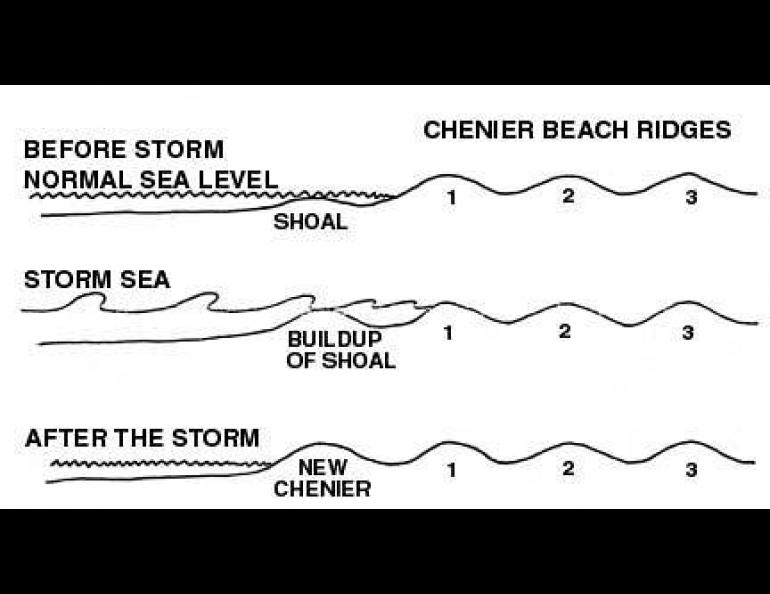
Krusenstern's Chenier Plain
At Cape Krusenstern, northwest of Kotzebue, 114 or more low beach ridges separate a marshy lagoon from the sea. Each ridge is younger than the ones behind it; all were formed during the last 5,000 to 6,000 years. Since the most seaward ridge was occupied by early man, archeologist J. Louis Giddings was able to formulate a chronology of occupation by noting which ridge a particular excavation was on.
How did these strange ridges form? They are all about the same height and altitude and so could not be formed by slow changes in sea level. Furthermore, it is known that sea level has not changed during the past 5,G00 years. Similar beach ridge formations occur on the Louisiana shore and near the mouth of the Amazon River. Based upon studies of these features, called cheniers or ritsens, reported by geological oceanographer W. Armstrong Price, we can see how the chenier beach ridges at Cape Krusenstern formed. In the process we learn something about the frequency of major storms in Kotzebue Sound.
I suspect that the source of the sandy material forming the cheniers is the Noatak River. Its mouth lies just 50 km to the east. Fine-grained clay, silt and sand particles emptied into the sea by the river are probably carried along the shore by westward moving currents. The near-shore water is fairly quiet so that the suspended particles settle out to form low offshore shoals. Cape Krusenstern is exposed to a long stretch of sea and the violent storm winds that occasionally strike Alaska's northwestern shore. Strong wind from the west can raise the sea level several feet. Heavy storm surf can then build a new beach ridge atop the former offshore shoal. When the storm is over, the sea retreats leaving the new ridge above normal sea level.
Based on the number of ridges and the 5,000 year time span, such storms must have occurred roughly every 45 to 50 years. Each time, the local residents must have abandoned their homesites and built new homes on the new ridge. Over the course of the years, the people migrated about two miles leaving behind the artifacts that describe their existence.





